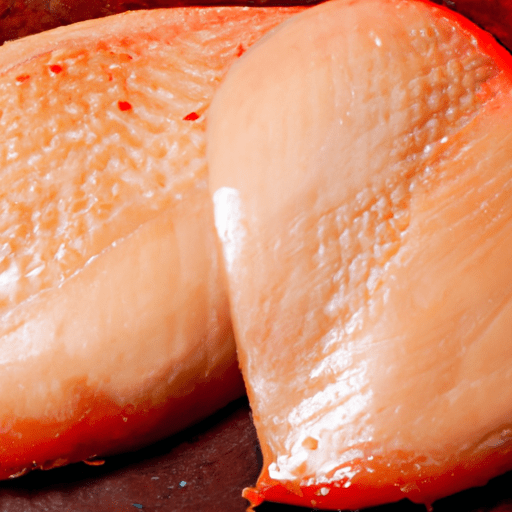Skinless Boneless Turkey Breast: A Versatile and Nutritious Delight
When it comes to lean and healthy protein options, skinless boneless turkey breast always ranks high on the list. This versatile cut of meat offers a tender and mildly flavored experience, making it a popular choice for both everyday meals and special occasions. In this blog post, we’ll explore the taste, common uses, nutritional value, and fascinating facts surrounding skinless boneless turkey breast.
Taste and Texture
Skinless boneless turkey breast is known for its mild flavor and tender texture. With its white meat, it offers a subtle and delicate taste compared to other cuts of turkey. Its texture leans towards the leaner side, allowing it to easily adapt to various cooking methods.
Common Uses in Cooking
Skinless boneless turkey breast is a versatile ingredient that can be used in a myriad of delicious recipes. Here are some popular cooking methods and recipes:
Roasting: Roasting the turkey breast in the oven is a classic and simple way to prepare it. Season it with herbs, spices, and a touch of olive oil, then cook it until it reaches the perfect internal temperature for moist and juicy results.
Grilling: BBQ enthusiasts love to grill turkey breast. Marinate it with your favorite flavors, then grill it to perfection. The smoky aroma combined with the lean meat creates an unforgettable taste.
Stir-frying: Sliced turkey breast is an excellent addition to stir-fries. Its quick cooking time and ability to soak up the flavors of different sauces and spices make it perfect for creating a nutritious and flavorful meal.
Sandwiches: Thinly sliced turkey breast is ideal for making sandwiches. Layer it on your choice of bread, add some fresh vegetables, and garnish with your preferred condiments for a wholesome and satisfying midday meal.
Nutritional Value
Skinless boneless turkey breast is not only scrumptious but also highly nutritious. Packed with essential vitamins, minerals, and lean protein, it’s a great addition to a balanced diet. Here’s a breakdown of its nutritional value per 4-ounce (112g) serving:
- Calories: 153
- Protein: 34g
- Fat: 1g
- Cholesterol: 70mg
- Iron: 1.3mg
- Vitamin B6: 0.7mg
- Potassium: 310mg
Interesting Facts and History
- Native American Roots: Turkeys were domesticated in ancient Mexico and were a vital part of the Native American diet, long before Europeans introduced them to the rest of the world.
- Thanksgiving Tradition: Turkey became the centerpiece of the traditional Thanksgiving feast in the early 19th century when it was declared by writer Sarah Josepha Hale to be the ideal food for celebration.
- Popularity: Turkey consumption in the United States skyrocketed during World War II when other meats were rationed, solidifying its place as a beloved holiday and everyday dish.
Now that you possess a wealth of knowledge about skinless boneless turkey breast, it’s time to roll up your sleeves, head to the kitchen, and explore the endless possibilities this versatile cut offers. Whether you’re grilling, roasting, or stir-frying, the mild taste and lean nature of turkey breast make it the perfect choice for creating wholesome and nutritious meals.
Skinless Boneless Turkey Breast
Origin: Turkey is a popular poultry meat that is native to North America. The domesticated turkey, utilized for its meat, was first domesticated by indigenous peoples in Mexico over 2,000 years ago. The turkey was later brought to Europe by Spanish explorers in the 16th century.
Common Uses: Skinless boneless turkey breast is a versatile ingredient used in various culinary preparations. It is commonly roasted, baked, grilled, or sautéed. It is often used as a substitute for chicken breast in recipes, making it ideal for dishes like turkey sandwiches, salads, stir-fries, and turkey cutlets.
Nutritional Benefits: Turkey breast is a lean meat and is a good source of high-quality protein. It is also low in fat, particularly saturated fat. It contains essential nutrients such as vitamin B6, niacin, phosphorus, and selenium. Turkey breast also provides a good amount of vitamins B3 and B12, iron, zinc, and potassium.
Unique Properties: The skinless boneless turkey breast is known for its mild flavor and tender texture. It is particularly praised for its versatility in cooking and its ability to absorb flavors from marinades, spices, and other ingredients. It can be seasoned and cooked in a variety of ways to suit different taste preferences.
Historical Significance: Turkey, including the breast meat, has a historical significance in North America as it was a staple food for Native Americans long before the arrival of Europeans. It later became an important part of European cuisines, especially in countries like the United States during Thanksgiving celebrations, where roasted turkey, including the breast, is traditionally served.




Use the share button below if you liked it.
It makes me smile, when I see it.